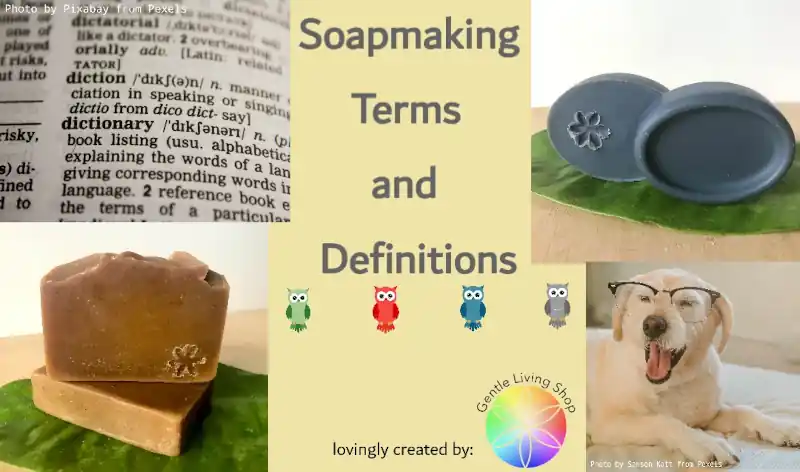Soapmaking Terms and Definitions

Here is a non-exhaustive list of soapmaking terms and their definitions in simple English. The terms especially serve as references to the guides and posts we have written on natural soapmaking. Hope you learn something new!
- Alkaline
- having a pH of 7 or more.
- Caustic
- see corrosive
- Caustic Soda
- see sodium hydroxide
- Chelator
- an agent that binds with metals to suppress their activities
- Corrosive
- being able to corrode, meaning can weaken or wear away gradually by chemical action
- Emulsification
- when oils are well-blended with lye solution where you won’t be able to see oil trails afloat when stirring
- False trace
- when soap batter appears to be thick but it has not yet reached emulsification.
This is due to hard oils solidifying when in contact with cold lye solution. - Hard oil
- an oil or butter that is semi-solid at room temperature (around 20°C), such as coconut oil, shea butter, and palm oil
- Hard water
- water with a high content of dissolved minerals, especially calcium, which reduces lathering in soap
- Lye
- an alkaline substance used to make soap, i.e. sodium hydroxide or potassium hydroxide
- Lye discount
- using less lye in a recipe where amounts of oils stay the same. Also known as superfat.
- Potassium hydroxide
- a caustic alkali used to make liquid soap, bleach and etc.
- Saponification (SAP)
- the process in which fatty substances, through combination with an alkali, forms soap
- Seizing
- when soap goes beyond thick trace to a point where it is difficult to transfer into moulds.
It is possible to soften seized soap with heat but it would be not viable to do designs with it. - Soap scum
- a chalky residue buildup on sink surfaces due to minerals in hard water reacting with soap
- Sodium hydroxide
- a caustic alkali used to make solid soap, paper and etc., also known as caustic soda
- Soft water
- water with low levels of dissolved minerals, making it easier to lather with soap
- Superfat or Superfatting
- using extra oil in soap recipe with unchanged amount of lye in order to result in unsaponified oils.
Also known as lye discount. - Trace
- the stage following emulsification which can be broken down into a spectrum of light, medium and hard – based on the thickness of the soap batter.
Familiarity with this stage helps with creating soap designs.
 Gentle Living Shop
Gentle Living Shop